ThE LiTTlE FRuiT TREE GuiLd
Plant a little fruit tree & companion guild plants to beautify your landscape while maximizing your health outcomes and household food security. Rezenience fruit trees are initially pruned very short, with the branches trained at no larger than a 45-degree angle to maximize fruit production. to exist in a small space, making it easy to care for and harvest fruit. No ladder needed!
Rezenience Guild plants are currently available at
the Bloomington Farm Stop Collective,
located at 902 West Kirkwood Avenue, Bloomington, Indiana.
THE bASics oF a GuiLD DESigN

The Components of a Guild
FIX: species that add nutrients back into the soil
ATTRACT: Flowering plants that attract pollinators and beneficial insects.
REPEL: Plants that repel unwanted insect pests
SUPPRESS: Groundcover plants that help suppress weeds
MULCH: Plants that decompose to renew topsoil and help maintain soil moisture.
EDIBLE: Food producing plants
How to Use ReZenience Sketch Maps
Sketch Maps & Plants
The plants listed on these sketch maps are those which Rezenience produces and sells locally in Bloomington, Indiana. Most plants will be available to be planted at the same time, although some, such as strawberries, will be in limited supply in the fall.
To ensure your guild planting can be installed in one fell swoop in the spring, send a message through the contact page to arrange a pre-order by December 15th, 2024.
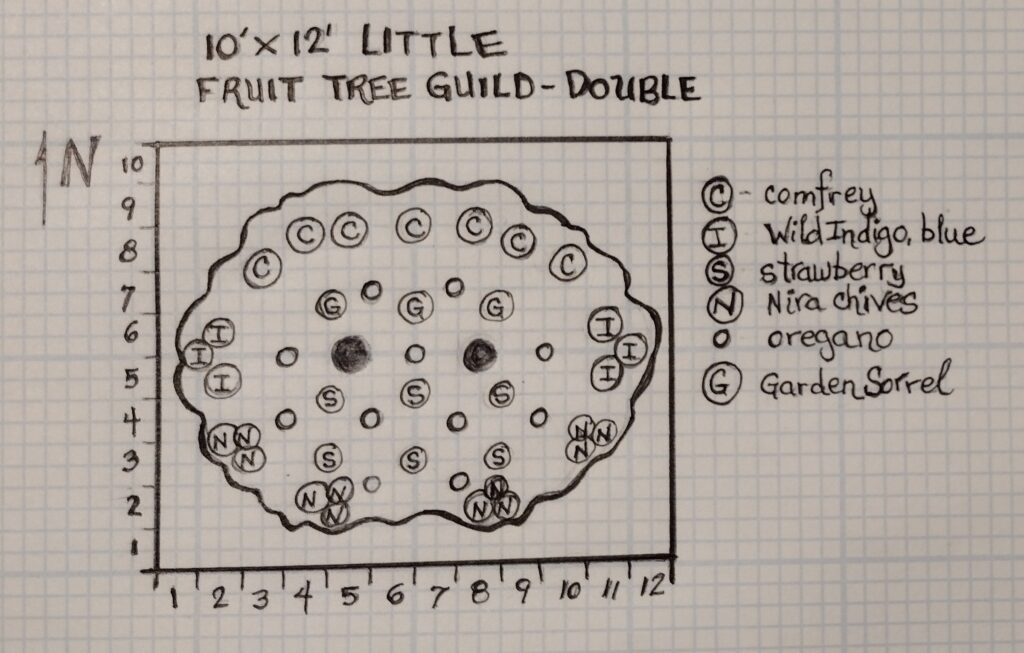
ReZEnience Guild PLants
Guild plants can be thought of as a companion planting and is also referred to as a polyculture. The plants chosen to be offered by Rezenience take into consideration that most small space gardens will be within an urban area. Some of these plants may already be used in your landscape, such as Wild Blue Indigo aka False Indigo, or oregano as a hardy creeping plant that produces small flowers in August unless trimmed back.
Other plants, such as comfrey, if regularly managed, can be used similarly to hosta, and be deer repellent. As a general rule, deer do not eat fuzzy leafed plants. Nira chives, also known as Chinese leek, have a similar gracefulness as liriope, and can beautifully edge walkways. Strawberry plants can be of a variety that is used solely as a groundcover, a type that is not an aggressive spreader via runners such as an alpine variety, June-bearing or an everbearer for near continual fruit production throughout the growing season.
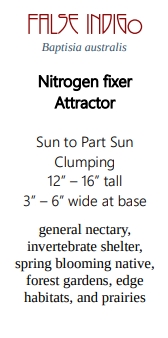
Mostly deer resistant.
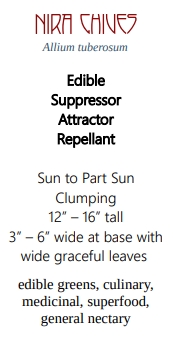
Tolerant of juglone
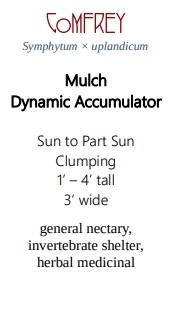
Tolerant of juglone
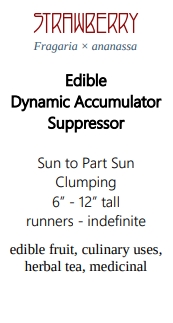
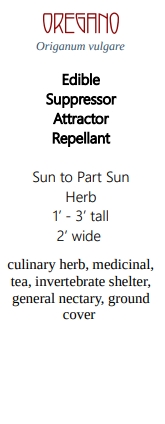

ReZEnience Fruit Trees
At the center of every guild is a tree or shrub, or a pairing or group for small spaces. Most fruit trees require a pollinator. You may already have another apple tree or a crabapple tree in your yard or in a nearby neighbors yard that can be a pollinator.
For the Fall of 2024, Rezenience offers these trees:
* Pristine Apple:
This is an early summer apple that typically bears as early as mid-July! The fruits are medium-to-large in size with a sweet-tart taste and a crisp texture. The apple is a canary-yellow colored skin with a slight pink blush. It is an excellent cooking apple, good for sauce, as well as eating fresh out of hand. It was developed in West Lafayette in 1975, and introduced to market circa 1995. Pristine is disease-resistant to scab, powdery mildew, fire blight and cedar-apple rust. It is not self-fertile and requires a pollinator.
* Arkansas Black Apple:
Ripening in October is the deep crimson, almost-black fruit of the Arkansas Black Apple. The firm crisp fruits store well for winter eating and, if properly stored, will last for up to eight months for continued fresh eating. This apple variety can be used for baking, and making apple butter to put up for winter. It’s also been used as an addition to cider-making for added complexity. Disease resistance against Scab, fire blight, and Rust.
* Chestnut Crabapple:
If needing a pollinator for other apples, look no further than the Chestnut Crabapple. If you’ve ever eaten crabapple jelly, then you’ll also be excited about the 2″ streaked red over pale yellow fruits to add some sweet tang to biscuits, and breads throughout the winter. The white flesh is fine-grained and crisp with a sweet nut-like flavor tasty for fresh eating, cooking and preserves. This crabapple is hardy and vigorous, adapting well to different soil types. The Chestnut Crabapple was developed at the University of Minnesota in 1946, which lets you know how cold-hardy it is. Expect fruits in early September, and be sure to have a pollinator nearby.
* Seckel Pear:
The small brown fruits of this dessert pear ripen in September, and has a sweet flavor with hints of spice for fall. It’s a variety often used in cooking and preserves, although is also enjoyed for fresh eating. The Seckel Pear is disease-resistant to fireblight. Philadelphia, Pennsylvania is where this delicious pear originates in the 1700s. It is not self-fruitful, and will need a pollinator. Pears typically grow taller than wide, so the open center pruning cut helps keep this typically more vertical grower under control. Similar to apples, this pear can also be trained into an espellier shape.
This page is in the process of being updated with information and plants for the fall season.
